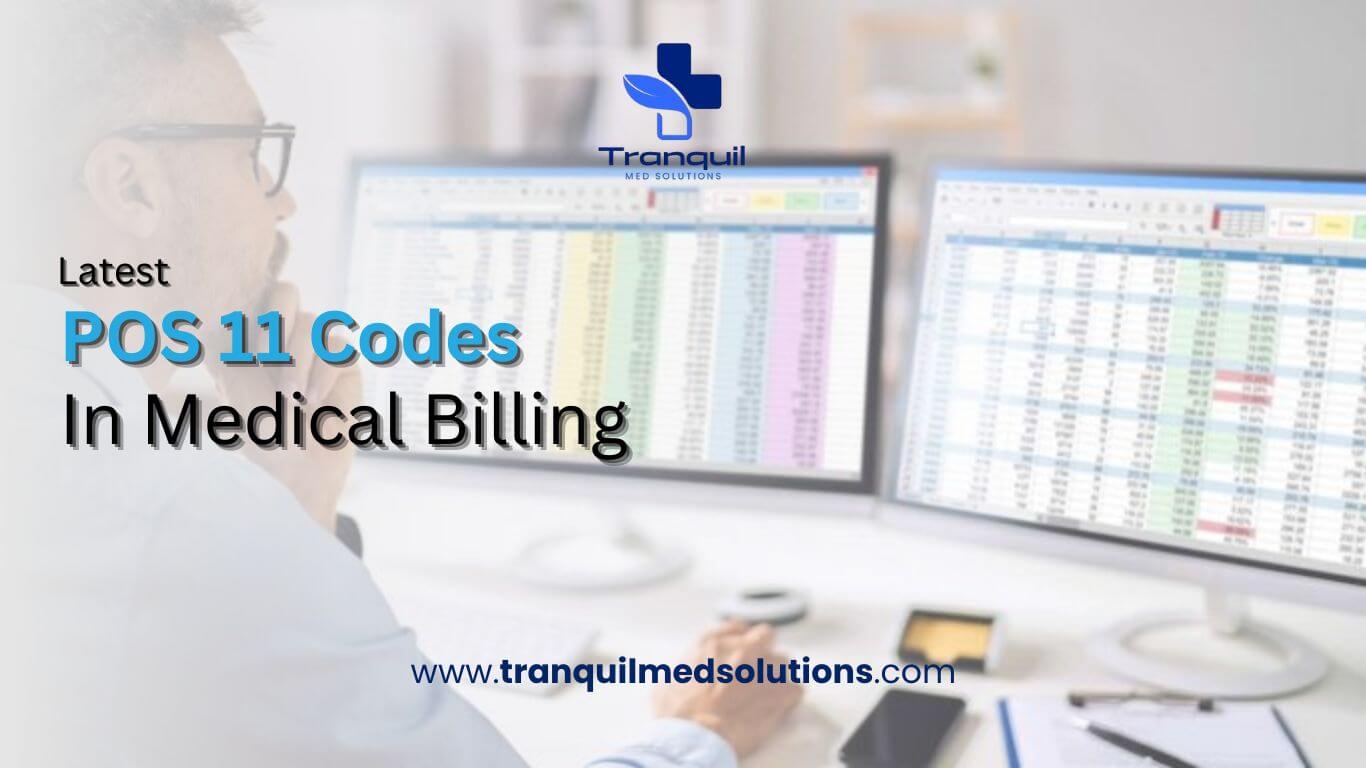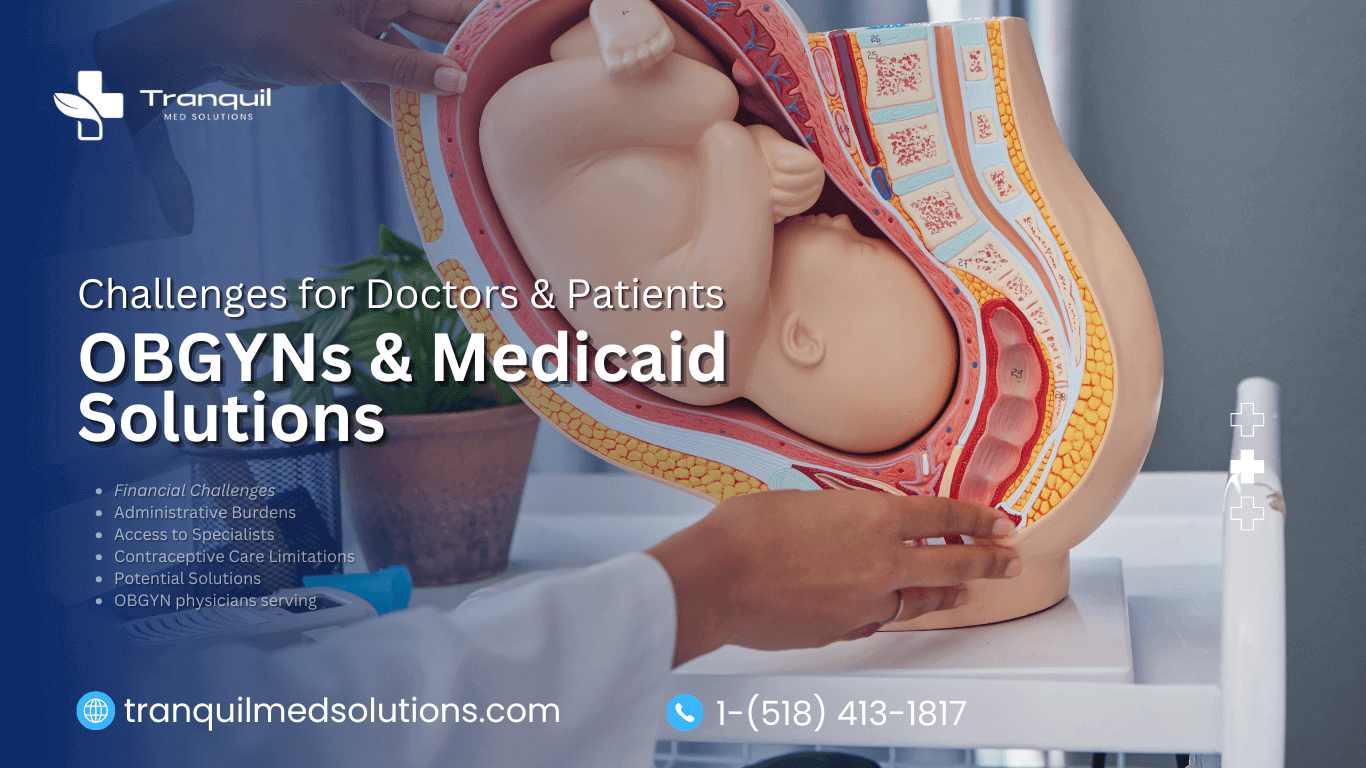When doctors and other healthcare professionals provide care, they typically do so in environments like hospitals, private practices, clinics, or medical offices. These are smaller, community-based settings rather than large government or corporate institutions. In medical billing, these environments are identified by specific codes known as ‘place of service’ (POS) codes.
For instance, POS 11 refers to a doctor’s office. So, when your doctor submits a bill for your visit, it will include POS 11 to indicate the location where you received care.
In this guide, we’ll dive deeper into POS 11. We’ll explore how it is utilized in the billing process, its importance in ensuring accurate payments, and best practices for its application.
POS Codes System in Medical Billing
To accurately document the locations where physicians provide care, the Centers for Medicare & Medicaid Services (CMS) assigns unique codes known as “POS Codes.”
These two-digit POS codes specify the setting where healthcare services were delivered, allowing insurance companies to determine the appropriate reimbursement rates for the care provided.
POS Codes are categorized as:
- Facility POS Codes
- Non Facility POS Codes
Facility POS Codes
When patients are treated in settings such as hospitals, nursing homes, or skilled nursing facilities, specific codes are used to categorize the services provided. These are referred to as Facility POS codes.
Facility POS codes are essential for accurately tracking patient care, ensuring proper record-keeping, and facilitating correct billing. These codes include:
- Inpatient Hospital (21)
- Outpatient Hospital (22)
- Emergency Room-Hospital (23)
- Urgent Care Facility (20)
- Skilled Nursing Facility (31)
- Hospice Facility (32)
- Ambulatory Surgical Center (24)
Non Facility POS Codes
Non-facility POS codes are used to classify the care provided in settings other than hospitals. Whether you visit your family doctor for a checkup, receive physical therapy at a local clinic, or consult a specialist for a procedure, these services are identified using non-facility POS codes.
Non-facility POS codes include:
- Office (11)
- Home (12)
- School (03)
- Independent Clinic (49)
POS 11 in Medical Billing
Healthcare providers use POS 11 codes to invoice for outpatient services carried out in their private practices, distinct from hospital environments. These codes cover routine procedures like physical exams, minor dermatology treatments, strep tests, and other care provided in a familiar, community setting. POS 11 coding ensures that professionals can accurately document and report the specialized care they offer in their own offices.
What are the Role of POS 11 in Reimbursement
POS billing codes significantly affect provider reimbursement rates by indicating where a medical service was performed, which guides insurance payments. For Medicare, POS 11, representing a doctor’s office, often results in higher reimbursement rates compared to facility-based settings like outpatient hospitals (POS 22-23) or ambulatory surgical centers (POS 24).
Providers offering services in their own office (POS 11) usually receive higher Medicare payments due to lower overhead costs compared to those in hospital outpatient departments (POS 22), where the reimbursement rates are generally lower due to higher operational expenses.
POS 11 in Claim Submission
The POS 11 code is vital for improving the billing process and decreasing the risk of claim denials. Its proper use is essential for several reasons when submitting claims to insurance companies:
Proper Reimbursement
Choosing the correct Place of Service (POS) code, such as POS 11 for office visits, is crucial to ensure physicians receive appropriate payment for their services. For example, if a doctor performs a routine physical in their office, using POS 11 accurately reflects the setting and helps ensure full reimbursement for the examination. Conversely, using POS 11 for an urgent care visit may lead to lower reimbursement rates. Proper POS coding is essential for accurate payments.
Billing Compliance
Adhering to insurance and regulatory requirements is fundamental to the success of any medical practice. The POS 11 code is vital as it precisely identifies where care was provided. Errors or inconsistencies with POS 11 coding can lead to claim rejections or audits, affecting cash flow and inviting regulatory scrutiny. Pediatricians, in particular, must use POS 11 correctly when billing for office-based care to ensure compliance and avoid disruptions.
Claim Approval
Correctly using the POS 11 code is essential for claim submission and approval. Incorrect POS codes are a common cause of claim denials, which can disrupt a practice’s cash flow. By verifying the POS 11 code before submitting claims, providers can reduce the risk of denials and expedite payments. For instance, an office visit should be billed with POS 11, while outpatient surgery requires POS 22. Ensuring accurate POS 11 coding helps minimize revenue cycle issues and ensures timely payment.
Common Mistakes in Using POS 11 Codes
Providers might use the wrong POS code on the CMS 1500 form for several reasons. Here are some key factors that every provider should be aware of:
| Error Type | Description | Prevention Tips |
| Mixing Up Code | Using POS 11 incorrectly for non-office settings, such as hospitals or nursing homes, can lead to claim denials. | Confirm that POS 11 is used exclusively for eligible office visits. Regularly validate that the place of service matches the POS code to avoid location mix-ups. |
| Incomplete Documentation | Incomplete medical records can undermine the use of POS 11. Proper documentation must include a detailed patient history, examination, and medical decision-making. | Ensure thorough documentation of key elements of the visit in patient charts. Provide comprehensive records to support the use of POS 11 and prevent claim denials. |
| Inconsistent Coding Practices | Inconsistent coding by different staff members can lead to data inaccuracies and difficulties in analysis and reporting. | Implement clear coding guidelines and staff training. Conduct periodic audits, resolve ambiguities as a team, and appoint a lead coder to handle gray areas for consistency. |
Key Features Between POS Code 11 VS. POS 22 in Medical Billing
| Key Features | POS Code 11 | POS Code 22 |
| User-Friendly Interface | Simplifies billing with an easy-to-use design, reducing the learning curve and improving operational efficiency in busy environments. | Highly customizable interface tailored to specific billing requirements and workflows. |
| Patient Account Management | Tools for managing patient accounts, including payments, insurance, and outstanding balances. | Advanced management features with real-time eligibility checks and automatic claim submissions. |
| Integrated Payment Processing | Offers secure and efficient payment methods, reducing errors and enhancing patient care and satisfaction. | Includes multiple integrated communication channels, from online portals to mobile apps, for consistent patient interaction. |
| Insurance Verification and Claims Processing | Enables real-time insurance verification and accurate claims processing to reduce denials. | Advanced patient and insurance management with historical billing details and real-time verification. |
| Reporting and Analytics | Equipped with tools like daily financial summaries, claim status reports, and patient account analytics to monitor performance. | Provides advanced reporting tools, actionable dashboards, and specific performance metrics for data-driven decision-making. |
| Cloud-Based Access | Allows access to patient details and billing data from any location, making remote management easier. | Supports multi-location management with centralized reporting and streamlined operations across various sites. |
| Multi-Location Support | – | Designed to support businesses with multiple locations, ensuring consistency in operations and centralization of financial information. |
| Integration with Third-Party Applications | – | Supports integration with applications like EHR systems, accounting software, and practice management tools for a cohesive technology ecosystem. |
| Employee Management | – | Includes tools for managing schedules, time tracking, and performance to optimize staff efficiency and labor costs. |
Conclusion
Choosing the right POS system is crucial for optimizing medical billing and enhancing patient satisfaction. POS Code 11 is ideal for cost-effective billing with strong patient account management and basic CRM features. In contrast, POS Code 22 is suited for complex billing in large health facilities, offering advanced customization, integration, and management capabilities.
Healthcare providers should understand the features and benefits of each POS system to select the best fit for their needs or expansion plans. Investing in the right POS system can boost productivity, improve billing accuracy, and contribute to future success.




